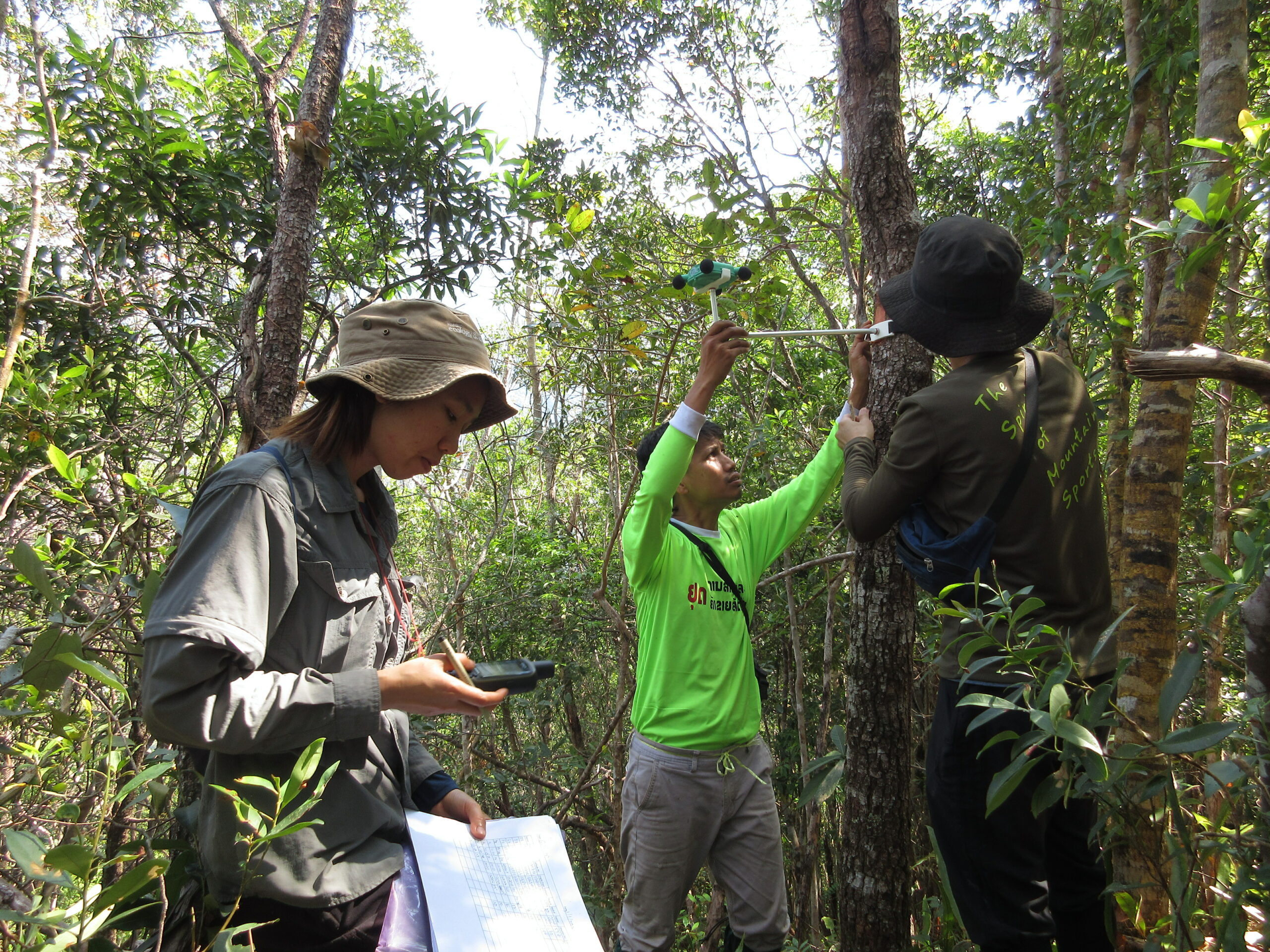
We present our achievements of 2023 to Government partners
February 27, 2024
A training on natural resources management for villagers and local partners
March 28, 2024
Gibbons are challenging to see but easy to hear, so the best way to detect them is to listen to them. It is easy to establish gibbon presence this way, but not so easy to estimate gibbon density and abundance, which requires information on their locations when calling. Digital recorders are better listeners than humans because they are cheaper, don’t get tired, don’t need to be fed, and produce reliable and objective data! But currently available recorders don’t estimate directions to calls which are essential for precise estimation of density.
In 2020, we initiated a new collaborative project between Association Anoulak, The Centre for Research into Ecological and Environmental Modelling (CREEM), University of St Andrews in Scotland, and Rainforest Connection with the aim to develop new digital recorders that estimate directions to sound accurately to improve density and abundance estimation, using acoustic spatial capture-recapture methods. The recorders’ hardware (called TReX) was developed by acoustic engineer Dr. Mark Johnson and his team. The software was developed by statisticians Dr. Cornelia Oedekoven and Dr. David Borchers and their team.

12 prototype TReX recorder devices, and Audiomoth recorders that were set up in combination with the TReX for acoustic quality comparison (spoiler: our TReX performed much much better!)
In January-February 2024, the first prototypes of the recorders were tested in the field in Xe Sap National Protected Area, in collaboration with WWF-Laos. This field mission was joined by Dr. Johnson, Dr. Oedekoven as well as Ms. Keo from Association Anoulak, and Mr. Bo and Mr. Peter from WWF-Laos.

Survey team including Mr. Bo and Mr. Peter from WWF-Laos; Ms. Keo from Association Anoulak; Ms. Cornelia from University of St. Andrews; Mr. Johnson from Ocean Instruments
The field mission was a success! Upon scanning the recordings, several gibbon calls could already be identified! The next step will involve analyzing the data recorded to improve the software and hardware.
Future field testing of new versions of the devices is planned for the next year. We hope this new method will improve gibbon population monitoring and conservation planning in the near future and be used widely by field practitioners working on gibbons in Southeast Asia.
This project was funded by Arcus Foundation (through a grant to St Andrews University), and Denver Zoo (through a grant to Association Anoulak). Field work was coordinated by WWF-Laos team. Great team work! We are looking forward to our continued collaboration.

TReX recording device set up in the forest

Setting up TReX recording devices in the forest

Setting up TReX recording devices in the forest

Survey design GPS tracking

Camp site

Planning survey at camp site

TReX recording devive and Audiomoth were set-up in combination for acoustic quality comparison (spoiler: our TReX performed much much better!)
